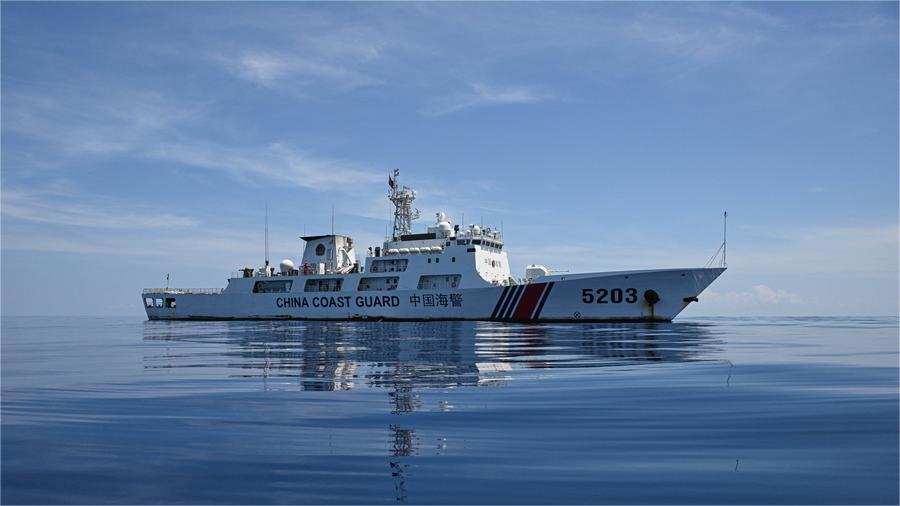Expert predicts positive export outlook for H2
At Jiangsu Dongcheng Power Tools Co Ltd, a Qidong, Jiangsu province-based manufacturer, in early June, spare parts flow seamlessly along an assembly line where they are processed, assembled into electric tools, and packaged in an efficient process.
This batch of electric tools will be shipped to countries including Vietnam, Algeria, and Brazil within the month.
"Since initiating our international expansion in 2013, our electric tools have developed a vast marketing network that covers more than 60 countries and regions across Southeast Asia, South Asia, the Middle East, North Africa, and Latin America," said Shen Yunyun, head of the company's sales unit for overseas markets.
With the rapid evolution of cross-border e-commerce, Shen said that the Chinese company is strategically focusing on this area to seek more customers.
Following the market trend, Jiangsu Dongcheng, supported by 5,000 engineers and workers, will also continue to invest in the research and development of cordless electric tools and battery storage business-related electric tools to support its export business this year, according to information released by Nanjing Customs.
Market observers said that China's ongoing optimization of its export goods structure and expansion of its trading partnerships will help mitigate the effects of rising trade barriers and other external challenges.
Thanks to these factors, China's exports surged 6.1 percent year-on-year to 9.95 trillion yuan ($1.37 trillion) in the first five months, said the General Administration of Customs.
China has been enhancing its industrial framework by transitioning from primarily processing raw materials to increasingly focusing on greener, advanced high-tech products. This shift underscores the country's evolving competitive edge in the next phase, said Lin Jiantian, director of the General Administration of Customs' Department of Enterprise Management and Audit-based Control.
China's export growth between January and May was attributable to the nation's production capabilities, market potential, and tech-intensive green products. A positive outlook is maintained for the coming months, said Guo Lei, chief economist at GF Securities.
A recent survey conducted by the Beijing-based China Council for the Promotion of International Trade showed that 81.6 percent of foreign trade-oriented businesses predict stable or increased exports in the first half.
The World Trade Organization also forecast in April a rebound in global trade, expecting goods trade to expand 2.6 percent in 2024 and 3.3 percent in 2025 after dipping 1.2 percent in 2023.
Li Muyuan, executive vice president of the China Container Industry Association in Beijing, warned that geopolitical tensions and supply chain disruptions remain key factors affecting China's foreign trade in the second half.
Disruptions in shipping routes, particularly those related to security issues in the Red Sea and the Suez Canal, could lead to increased shipping costs, extended travel times, and supply chain interruptions, said Li.
Influenced by anticipated uncertainties of new trade policies due to the US general elections later this year, many US retailers and businesses from other sectors have been rushing to order products from Chinese exporters to replenish their stocks, said Yang Changyong, a researcher with the Academy of Macroeconomic Research under the National Development and Reform Commission.
Also, the European Union has recently launched a series of discriminatory investigations against Chinese electric vehicles, wind power, and photovoltaic products, leading to an increasing risk of economic and trade frictions between China and the EU, said He Yadong, spokesman for the Ministry of Commerce.
Liang Ming, director of the Institute of International Trade, which is part of the Chinese Academy of International Trade and Economic Cooperation, emphasized enhanced trade cooperation with a broader array of partners, including economies of the Association of Southeast Asian Nations and Arab League countries.
This diversification will assist China in addressing the challenges arising from "decoupling" efforts conducted by the United States and certain European countries, said Liang.
Photos
Related Stories
- Complaints are baseless against China green product exports
- China to impose export controls on certain aviation, space equipment
- Experts, execs attribute edge in exports to tech strength
- China's robust exports give auto parts industries a leg-up
- New tech may reduce reliance on soybean imports
- China building smart ports to bolster export-oriented economy
Copyright © 2024 People's Daily Online. All Rights Reserved.









